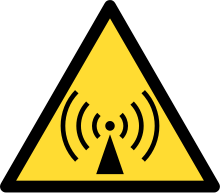Title Page
-
This audit is a tool to help you assess your performance against the requirements of AS/NZS 2243.5:2004 Safety in laboratories Part 5: Non-ionizing radiations – Electromagnetic, sound and ultrasound and Radiation Protection Standard for Occupational Exposure to Ultraviolet Radiation (2006) (RPS 12).
When you select 'No' on a question it may be related to a recommendation or 'should' statement (orange/warning) or a requirement or 'shall' statement (red/fail). All No and N/A responses should be explained in the notes field for that question. -
-Note about exempt sources -
In ARPANS Regulations 2018 section 44 (7) exempt dealings describe the following items as exempt:
(k) an artificial optical source emitting ultraviolet radiation (315-400 nm)
(l) a completely enclosed apparatus containing an ultraviolet radiation light source (e.g. a spectrophotometer)
(m) a biological safety cabinet (laminar flow or biohazard) with a failsafe interlock system -
Conducted on
-
Prepared by
-
Lab/Building Name
-
Address/Location
Premises/Management Questions
-
These questions apply to the laboratory or work site as a whole, questions specific to each UV source will be in the following section.
-
Are employees provided with safety training before working with UV sources? [AS: 1.5.4; RPS: 2.1, 3.1.4]
-
Describe the type of training
-
Provide evidence (e.g. training records)
-
Are procedures in place to ensure risk assessment and control prioritisation are carried out prior to use of UV sources? [AS: 1.5.1 & 1.5.3; RPS: 3.1.2 & 3.1.3]
-
Are documented procedures in place, in the form of a list of authorised personnel, standard operating procedures and work instructions [RPS: 3.1.4]
-
Notes for site controls and assessments (if any)
Incident Reporting [AS: 1.6; RPS: 3.3]
-
Is there an Incident Reporting procedure in place?
-
Are there plans for the management of post incident exposure?
UV Source
-
Note: you can inspect multiple UV sources on one checklist by adding extra unit's here.
UV source
-
ID (e.g. Serial No/LAD No/ Description of unit )
-
Picture of unit
-
Main purpose/use of UV source
Physical Control Measures [AS 1.5.3; RPS: 2.1, 3.1.3]
-
Engineering controls are in place (ex. shielding, barriers, enclosing source, fail-safe interlocks, distance from source, isolation)
-
What type of engineering controls are in place?
-
Notes about physical controls (if any)
Administrative Controls Measures [AS 1.5.3; RPS: 2.1, 3.1.3]
-
PPE (e.g. protective clothing, eyewear, gloves) is provided for UV protection
-
What type of PPE is provided? include the standard or rating (e.g. wavelength / Australian Standard AS/NZ 1607.1, AS/NZ 1338.2 )
-
Evidence of PPE
Labelling & Signage [AS 1.5.3, 1.5.5; RPS: 3.1.3]
-
This is the non-ionising radiation symbol:
-
Warning signs are displayed at the entrance and/or adjacent to source
-
Photo of warning signage/label
-
Signage includes the non-ionising radiation symbol
-
The type of radiation is identified on the sign
-
Signs indicate PPE to be used
-
Signs indicate access restrictions to authorised personnel only (listed)
-
Notes about signage and labelling (if any)
Exposure Limits [AS 2.4; RPS: 3.1.2(b), 3.15]
-
Exposure emission levels have been estimated (or measured) as part of risk assesment
-
Exposure emission levels have been measured
-
Measurement made on
-
Details of emission level measurment (e.g. result, distance, device)
-
Is there a plan to measure exposure? or descibe arrangements
-
Permissible exposure time (exposure limit 30 J.m–2 to eye or skin) has been<br>calculated [RPS12: Schedule 1.5, Annex 3]
-
The calculated permissible exposure time is








